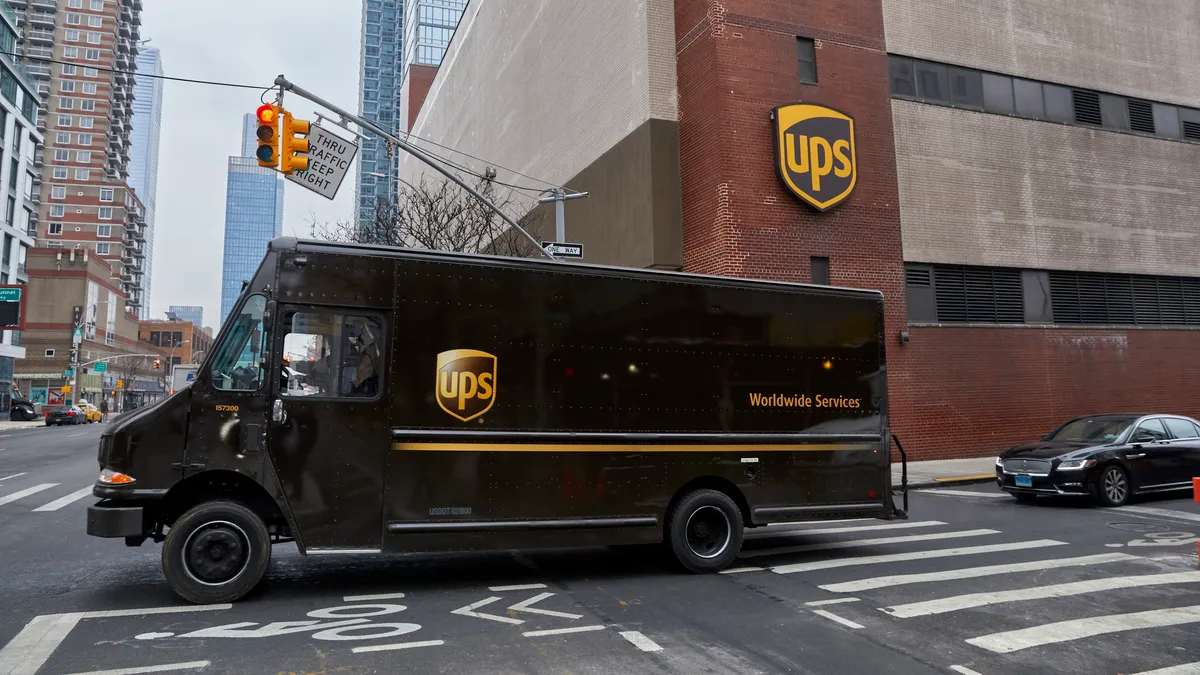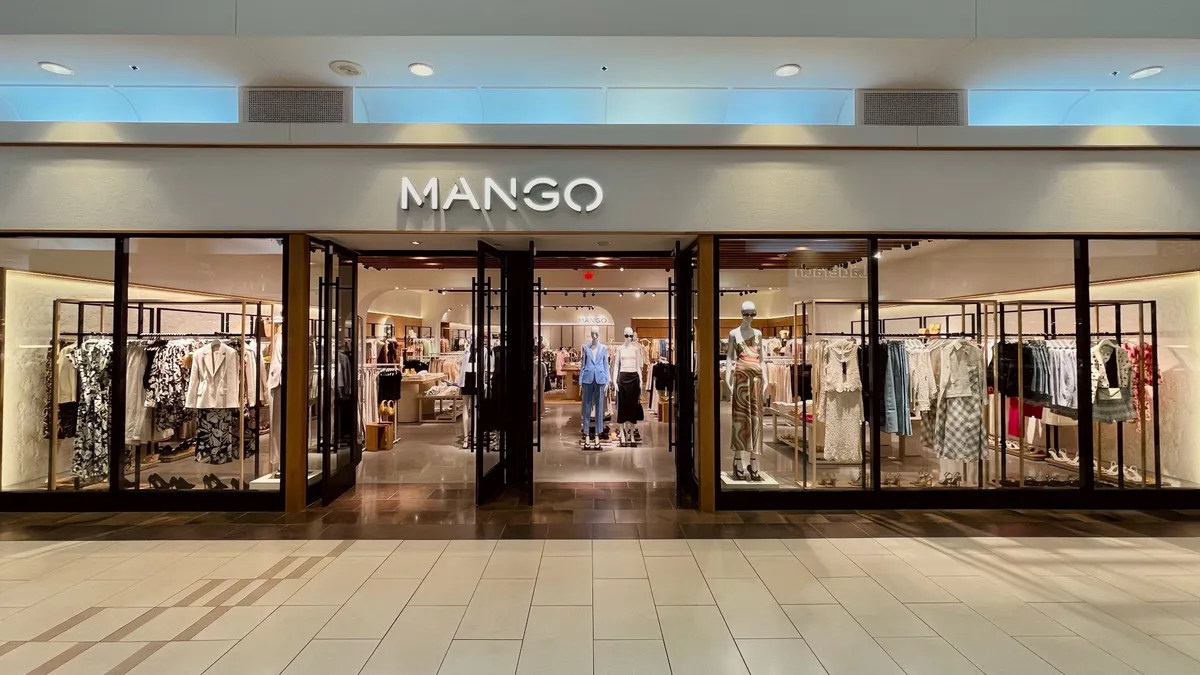Juan Perez has left UPS with a legacy that includes a stint as a delivery driver in 1990 and a rise to the title of CIO in 2016. He then expanded his role to encompass engineering, and wielded a $6 billion budget.
On Monday, Perez started his new job as CIO of Salesforce. His still-unnamed successor will only take over half the job.
"We're not going to have the CIO and the engineering officer role combined anymore," Perez told CIO Dive. "I was able to do that because I had experience in both areas — and there was a need at that particular time in the company to bring those two functions together."
But his successor will face formidable challenges. UPS is "so dependent on technology, that IT has taken a central role," Perez said.
UPS has more than 550,000 employees — more than 5,000 of which are dedication to technology — and global operations that include an airline, a supply chain solutions business and a small package business. Every day, UPS delivers almost 25 million packages and documents.
Technology weaves throughout what Perez calls a "smart logistics network."
A data-driven strategy encircles the network: data are available to users or systems to make better and faster decisions, tapping into automation as needed.
"Packages are constantly flowing no matter what actually is thrown into this network," Perez said.
Delivery and handhelds
Perez's experience at UPS spans the entire operation, starting with a eight-month stint as a driver in Beverly Hills, California, as part of a management training program.
When he was knocking on doors with packages, the delivery process used analogue tracking and recorded packages by hand on paper. During his tenure, Perez piloted the first version of a "delivery information acquisition device" (DIAD), a basic computer, clipboard-size.
This year, UPS will refactor the entire application and the backend support systems into a more nimble handheld: DIAD 6.
Perez thinks of the newest evolution as "a driver assistant," augmenting the smarter vehicles and handheld devices.
"But here's the virtuous cycle that UPS has always been in … the innovations that we have in hand today will lead to more innovations in the future," he said.
UPS's investment in technology is one of the main threats to its fiercest competitor — FedEx — according to Dean Maciuba, managing partner USA at Crossroads Parcel Consulting.
"UPS always had significantly more resources to throw at customer technology solutions," Maciuba said. After lagging FedEx's early investment strategy in express shipping, UPS poured money into R&D.
Though UPS is still investing heavily in technology, deployment is sometimes delayed by complications in IT development and regulations.
Grand plans for drones and electric aircraft, for example, are barely off the drawing board. But Perez still sees them as the future of last-mile delivery.
UPS plans to purchase Vertical Takeoff and Landing aircraft from BETA Technologies, with the first 10 aircraft to begin arriving in 2024. The 250-mile range aircraft have a 1,400-pound cargo capacity, suited for the small- to mid-size markets. UPS has the option to purchase up to 150 of the aircraft.
Centralizing the CIO
Core to Perez's leadership: IT-business intimacy.
IT is "a participant in the business team's objectives, and of course, it's also a participant in the business team's results," Perez said.
He paved the way for standards and a process where the architecture team at UPS sees all the technologies deployed across the organization. Through that discipline, and improving technology processes, UPS has reduced business-impacting incidents 73% since Perez’s tool over, he said. UPS considers an incident business-impacting if any technology-related issues or change causes a package to not be delivered on time.
Alongside investments in R&D, UPS continues to invest in its network, announcing last week an expanded partnership with Google Cloud. In 2019, UPS touted its collaboration with Google Cloud Platform on routing software for saving the company up to $400 million a year, reducing fuel consumption by 10 million gallons a year.
It still has a robust on-premise technology investment, with four mainframes and 76.3 petabytes of storage. More than 90% of its data center servers are virtualized, according to UPS.
One of the cornerstones of his tenure is Perez's work on ORION, the On-road Integrated Optimization and Navigation system for UPS, which helps dynamically optimize driver routes to improve last-mile delivery.
UPS is now working toward automating driver dispatch so the technology can create the entire dispatch, optimizing routes while providing driver feedback, Perez said.
With more cloud capacity, UPS will invest in new data analytics and AI/Ml tools to help improve supply chain operations.
The company is also investing in the modernizations of its back office solutions, including its ERP and payroll systems.
While Perez always assigns a certain amount of the budget for technology modernization, he also sets aside room for technical debt reduction, a balance he strictly maintains.
It's all about balance, Perez said. "At the end of the day, the CIO needs to be very effective working again with the business in defining priorities for the organization as to where the budget is going to go."
With a boost from the pandemic-delivery demand, CIOs are reporting to the CEO and have a direct line to the board, establishing technology as a mission critical operation.
There's been significant improvement during the pandemic to align business technology with the C-suite, according to Craig Stephenson, senior client partner, managing director, North America with Korn Ferry's CIO/CTO practice.
The top cadre of technology leaders are agile thinkers who can handle a lot of complexity, Stephenson said. Companies are evolving and tackling talent with expertise in data analytics and cloud. Successful leaders need a high level of comfort with ambiguity.
Centralizing IT with the business goals is key to Perez's leadership strategy and his legacy. Serving as a CIO for more than six years, the once-delivery-driver has cemented his role, closely aligning with UPS's top leader, CEO Carol Tomé.
In fact, Perez avows CIOs must report to the CEO: "It's important the CIO has that seat at the table and that support from the CEO to be able to do his or her job."
























